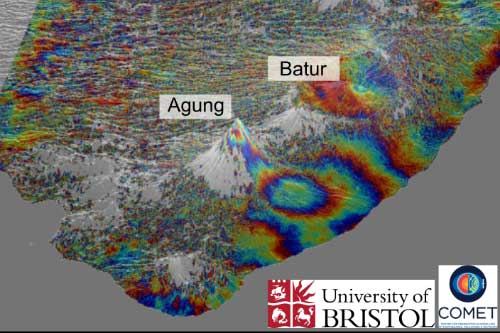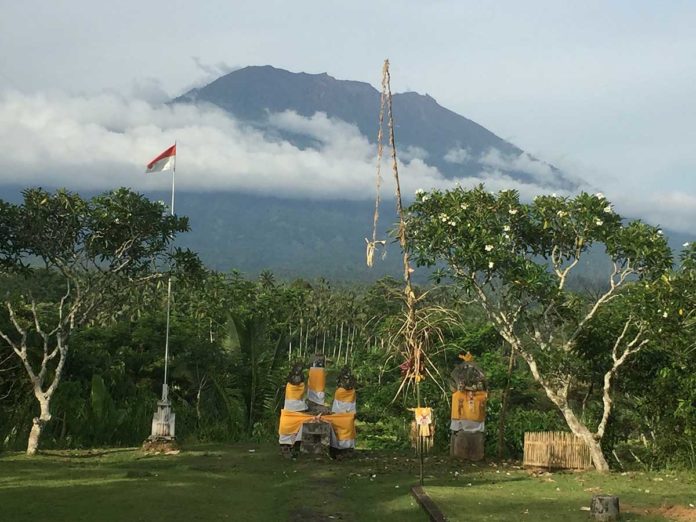The previous eruption of Agung in 1963 killed nearly 2,000 people and was followed by a small eruption at its neighboring volcano, Batur.
In September 2017, a distal seismic swarm triggered the evacuation of around 140,000 people from Agung volcano, Bali. As this event was the deadliest volcanic eruptions of the 20th Century, scientists are putting great effort to monitor and understand the re-awakening of Agung.
Now, using satellite technology and 3D numerical models, scientists at the University of Bristol have uncovered why the Agung volcano in Bali erupted in November 2017 after 50 years of dormancy. They have shown that seismicity was associated with a deep, sub-vertical magma intrusion between Agung and its neighbor Batur.
Scientists used Sentinel-1 satellite imagery provided by the ESA to monitor the ground deformation at Agung. They then detected uplift of about 8-10 cm on the northern flank of the volcano during the period of intense earthquake activity.

Picture by Fabien Albino, COMET, University of Bristol.
Dr. Juliet Biggs said, “From remote sensing, we are able to map out any ground motion, which may be an indicator that fresh magma is moving beneath the volcano.”
Dr. Fabien Albino, also from Bristol’s School of Earth Sciences, added: “Surprisingly, we noticed that both the earthquake activity and the ground deformation signal were located five kilometers away from the summit, which means that magma must be moving sideways as well as vertically upwards.”
“Our study provides the first geophysical evidence that Agung and Batur volcanoes may have a connected plumbing system.”
“This has important implications for eruption forecasting and could explain the occurrence of simultaneous eruptions such as in 1963.”
Their findings, published today in the journal Nature Communications, could have important implications for forecasting future eruptions in the area.
